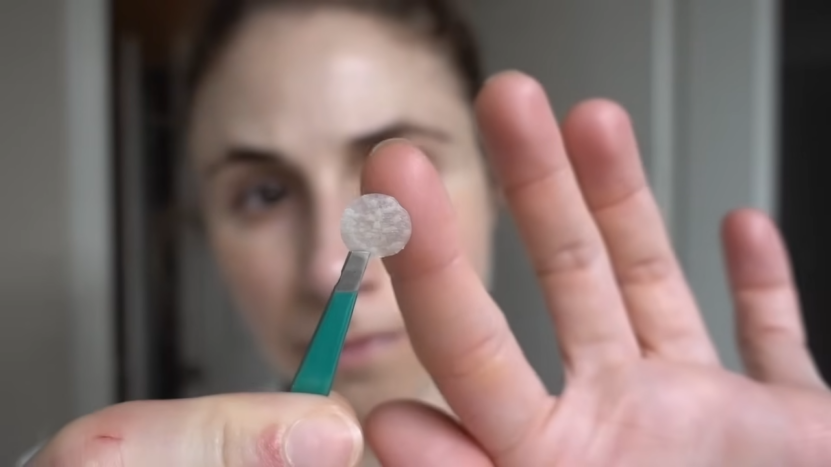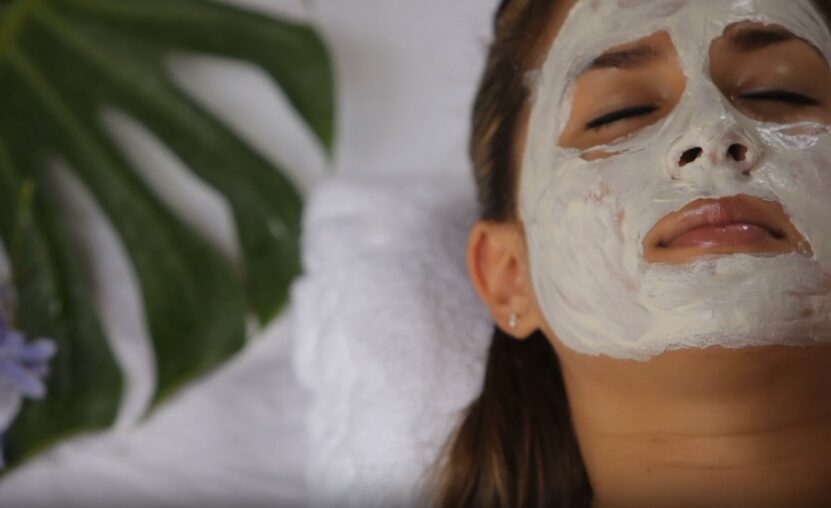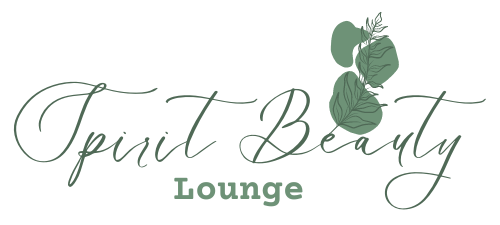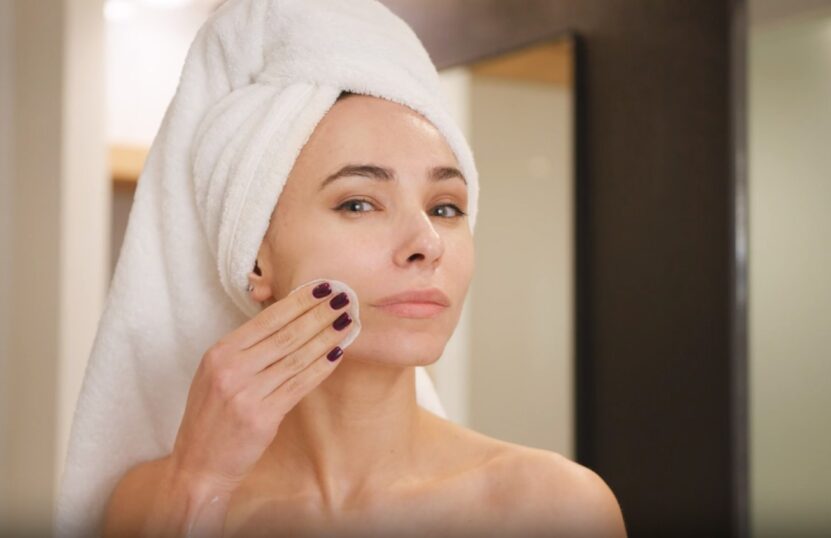Facial scabs can be a source of discomfort and self-consciousness. Before we explore how to hide them effectively, it’s crucial to understand what they are. A scab is the body’s natural way of healing and protecting a wound, such as a cut, scrape, or pimple.
It’s essential to remember that a scab is part of the healing process, and while it may not be aesthetically pleasing, it’s a sign that your body is working to repair itself.
Alternative Concealment Strategies

When makeup isn’t an option, there are several strategies to consider for concealing facial scabs. These methods focus on drawing attention away from the scab or using certain accessories or techniques to cover them.
Clothing and Accessories
Strategically chosen accessories can be a great way to draw attention away from facial scabs. Hats, scarves, and glasses can help cover or distract from scabs on certain parts of the face.
For example, a stylish hat or beanie can draw attention upwards, away from scabs on the lower face, while glasses can help camouflage those near the eyes.
Hairstyle Adjustments

Changing your hairstyle can also be a subtle yet effective way to cover facial scabs. Bangs can cover forehead scabs, and side parts can help hide scabs on the temples or cheeks.
It’s important to ensure that the hair is clean and not irritating the scab, as dirty hair can cause infection and hinder the healing process.
Skin Care Techniques
Proper skincare is vital in both healing and concealing scabs. Keeping the skin around the scab moisturized can reduce the appearance of flakiness, making the scab less noticeable.
Using a gentle, non-comedogenic moisturizer can keep the skin hydrated without causing further breakouts. Additionally, applying a thin layer of petroleum jelly over the scab can protect it and reduce its appearance.
Healing and Prevention
First and foremost, proper wound care is crucial. Gently cleaning the area with mild soap and water, applying an antibacterial ointment, and keeping it covered can speed up the healing process. It’s also important to avoid picking or scratching the scab, as this can lead to scarring or infection.
If the scab is from acne, addressing the underlying acne issues with proper skin care and possibly consulting a dermatologist can prevent future breakouts and scabs.
Scab Stages
Scabs go through several stages as they heal. Initially, they may be red and swollen, eventually hardening and becoming darker in color. As healing progresses, the scab will start to shrink and may itch.
It’s essential during all these stages to maintain good skincare and avoid disturbing the scab. This knowledge helps in choosing the right methods to hide them without hindering the healing process.
Lifestyle and Dietary Considerations

Beyond external methods, internal factors like diet and lifestyle can significantly impact the healing of facial scabs and overall skin health. These factors can not only speed up the healing process but also improve the skin’s appearance, making scabs less noticeable.
Hydration and Nutrition
Hydration is key to healthy skin. Drinking plenty of water helps to keep the skin supple and may aid in the healing process. A diet rich in vitamins and minerals, particularly vitamins A and C, zinc, and protein, can promote skin healing and health.
Foods like citrus fruits, leafy greens, nuts, and lean proteins are excellent choices for supporting skin repair.
Stress Management and Sleep

Stress and lack of sleep can hinder the body’s ability to heal and may even exacerbate skin issues like acne. Engaging in stress-reducing activities such as exercise, meditation, or hobbies can promote overall well-being and aid in skin health.
Ensuring adequate and quality sleep each night also supports the healing process and improves skin appearance.
Avoiding Irritants
Finally, avoiding skin irritants is crucial when dealing with facial scabs. This includes avoiding harsh skincare products, excessive sun exposure, and environments with high pollution or smoke.
Using gentle, hypoallergenic skincare products and protecting the skin from the sun with hats or sunscreen can prevent further irritation and promote healing.
Advanced Healing Techniques
Beyond the basics of skincare and lifestyle adjustments, there are advanced techniques and remedies that can accelerate healing and effectively reduce the visibility of facial scabs.
These methods range from natural remedies to over-the-counter products, each offering unique benefits.
Natural Remedies

Natural remedies can be gentle yet effective in aiding the healing process.
- Aloe vera, known for its soothing and healing properties, can be applied to the scab to reduce redness and promote healing.
- Honey, particularly Manuka honey, is another natural option that offers antibacterial properties and can speed up healing while keeping the area moisturized. There are several over-the-counter products that can aid in the healing of scabs.
- Hydrocolloid bandages are particularly effective as they provide a moist environment for the wound to heal, potentially reducing healing time and minimizing scarring.
- Additionally, topical treatments containing ingredients like tea tree oil or salicylic acid can help if the scab is from acne, as they reduce inflammation and prevent further breakouts.
Advanced Skincare Products
Incorporating certain advanced skincare products into your routine can also benefit the healing of scabs. Products with hyaluronic acid can provide intense hydration, aiding in overall skin health and reducing the appearance of scabs.
Retinoids may also be beneficial in promoting skin renewal, though they should be used with caution and ideally under the guidance of a dermatologist.
FAQs
Can essential oils help in the healing of facial scabs?
Yes, certain essential oils like lavender and frankincense can aid in healing due to their anti-inflammatory and antimicrobial properties. However, they should be used cautiously and diluted with a carrier oil, as the direct application can be too harsh for the skin.
Is it safe to use ice to reduce swelling around a facial scab?
Applying ice can be beneficial in reducing swelling, especially in the initial stages of a wound. It’s important to wrap the ice in a clean cloth to avoid direct contact with the scab, which can cause further irritation or damage to the healing tissue.
How can I tell if a scab is infected and what should I do?
Signs of infection include increased redness, swelling, warmth, pain, or pus. If you suspect an infection, it’s important to consult a healthcare professional for appropriate treatment, which may include topical or oral antibiotics.
Can dietary supplements aid in the healing of facial scabs?
Supplements such as zinc, vitamin C, and omega-3 fatty acids can support skin healing. However, it’s advisable to consult with a healthcare provider before starting any supplements, especially if you have underlying health conditions or are taking other medications.
Is it beneficial to apply sunscreen on a healing facial scab?
Yes, protecting a healing scab from the sun is crucial as UV exposure can slow down the healing process and increase the risk of scarring. Use a broad-spectrum sunscreen with at least SPF 30 and reapply as necessary, especially if you’re spending extended time outdoors.
Are there any specific exercises or physical activities that should be avoided with a facial scab?
Strenuous exercises that cause excessive sweating or put pressure on the face should be avoided as they can irritate the scab. Gentle activities like walking or yoga can be beneficial, but always be mindful of the scab’s condition and avoid any activity that might cause harm to the healing area.
Summary
In summary, hiding facial scabs without makeup involves several steps. It’s not just about covering them up; it’s about taking good care of your skin, making smart choices in your daily life, and understanding and accepting the situation.
Facial scabs are not just marks on the skin; they show how our body can heal itself. To deal with them, you should take care of your skin gently, use natural treatments and products you can buy without a prescription, and change some of your daily habits.
Doing these things helps make the scabs less noticeable and helps them heal faster and better.

